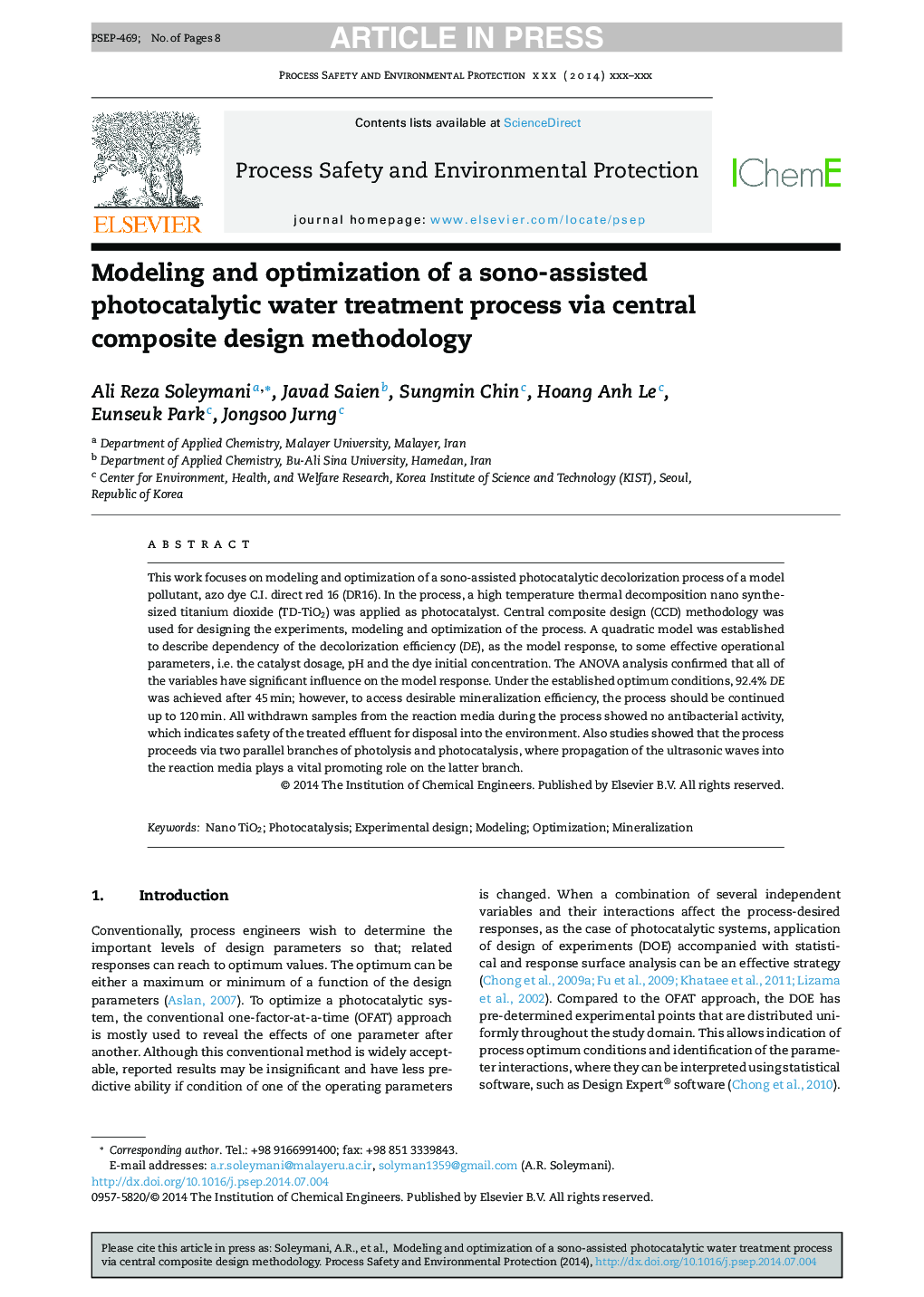| Article ID | Journal | Published Year | Pages | File Type |
|---|---|---|---|---|
| 6974512 | Process Safety and Environmental Protection | 2015 | 8 Pages |
Abstract
This work focuses on modeling and optimization of a sono-assisted photocatalytic decolorization process of a model pollutant, azo dye C.I. direct red 16 (DR16). In the process, a high temperature thermal decomposition nano synthesized titanium dioxide (TD-TiO2) was applied as photocatalyst. Central composite design (CCD) methodology was used for designing the experiments, modeling and optimization of the process. A quadratic model was established to describe dependency of the decolorization efficiency (DE), as the model response, to some effective operational parameters, i.e. the catalyst dosage, pH and the dye initial concentration. The ANOVA analysis confirmed that all of the variables have significant influence on the model response. Under the established optimum conditions, 92.4% DE was achieved after 45Â min; however, to access desirable mineralization efficiency, the process should be continued up to 120Â min. All withdrawn samples from the reaction media during the process showed no antibacterial activity, which indicates safety of the treated effluent for disposal into the environment. Also studies showed that the process proceeds via two parallel branches of photolysis and photocatalysis, where propagation of the ultrasonic waves into the reaction media plays a vital promoting role on the latter branch.
Related Topics
Physical Sciences and Engineering
Chemical Engineering
Chemical Health and Safety
Authors
Ali Reza Soleymani, Javad Saien, Sungmin Chin, Hoang Anh Le, Eunseuk Park, Jongsoo Jurng,
